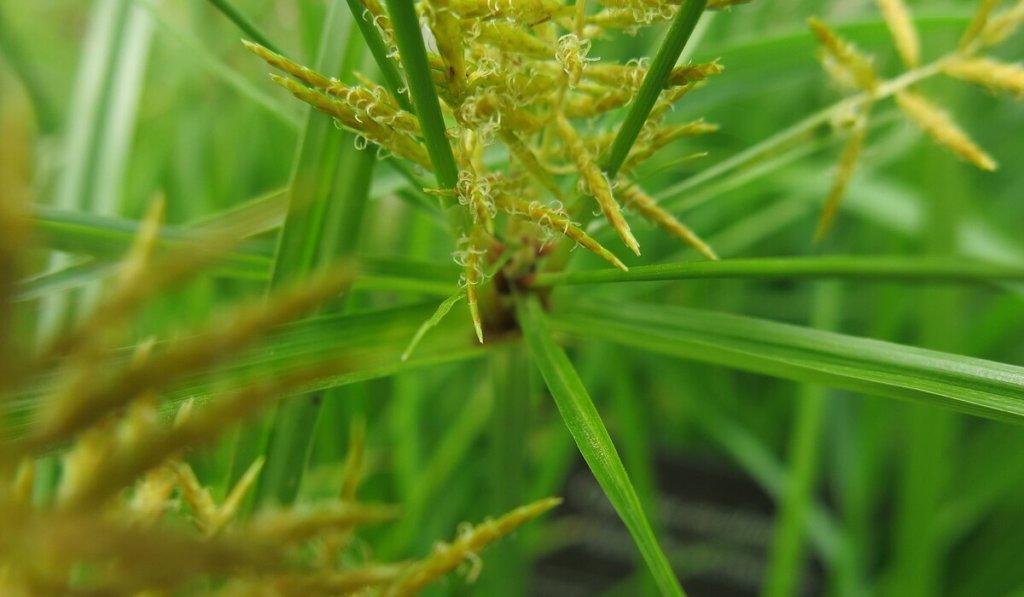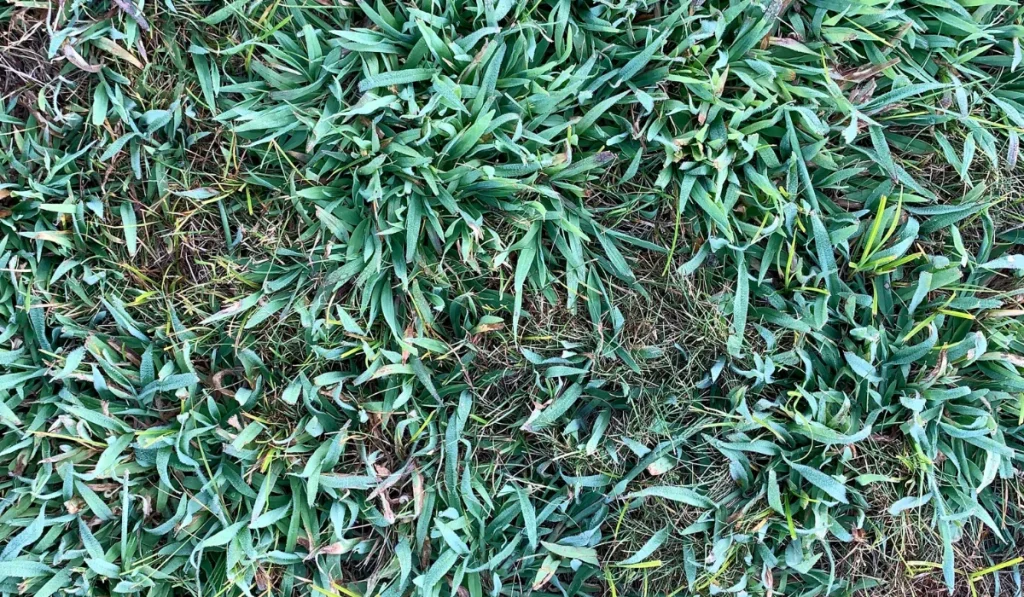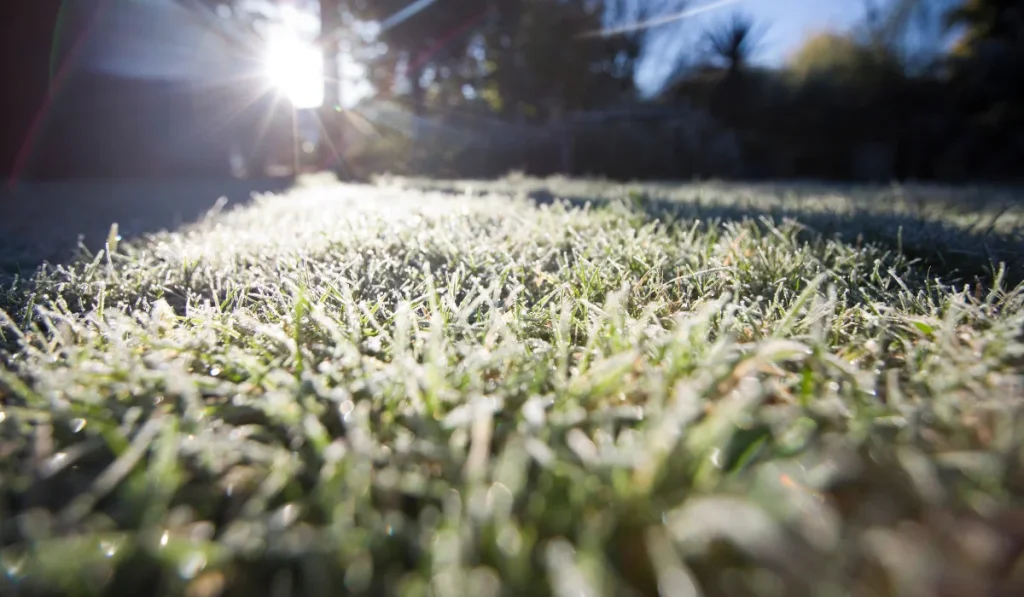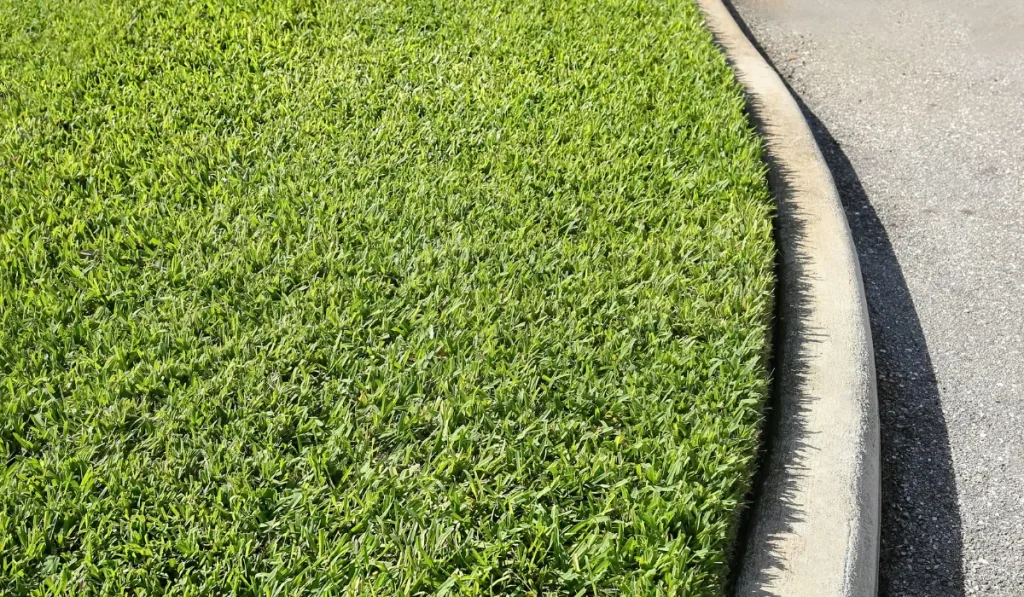Nutsedge, or nutgrass, is a common headache for homeowners. This aggressive weed can quickly take over your yard or garden, and traditional weed control methods often fall short.
However, there are practical solutions available. In this post, we’ll share effective ways to eliminate nutsedge permanently. Whether experienced or a beginner, our tips are simple to understand and apply. Let’s get started!
Key Takeaways
- Nutsedge is a lawn weed easily recognized by its triangular stem, shiny leaves, and distinctive seed heads; it’s not an actual grass and can quickly overtake a lawn or garden.
- To kill nutsedge in your lawn, you can use chemical methods, such as pre-emergent and post-emergent herbicides, or natural methods, such as hand-pulling and smothering, depending on your circumstances.
- For the best results, apply herbicides at the right time, use repeated applications as needed, and avoid overuse to prevent herbicide resistance.
- Maintain your lawn properly, prevent seeds from spreading, and inspect your lawn regularly to catch and treat infestations early to prevent nutsedge weed from taking over your yard and flower beds.
What Is Nutsedge?
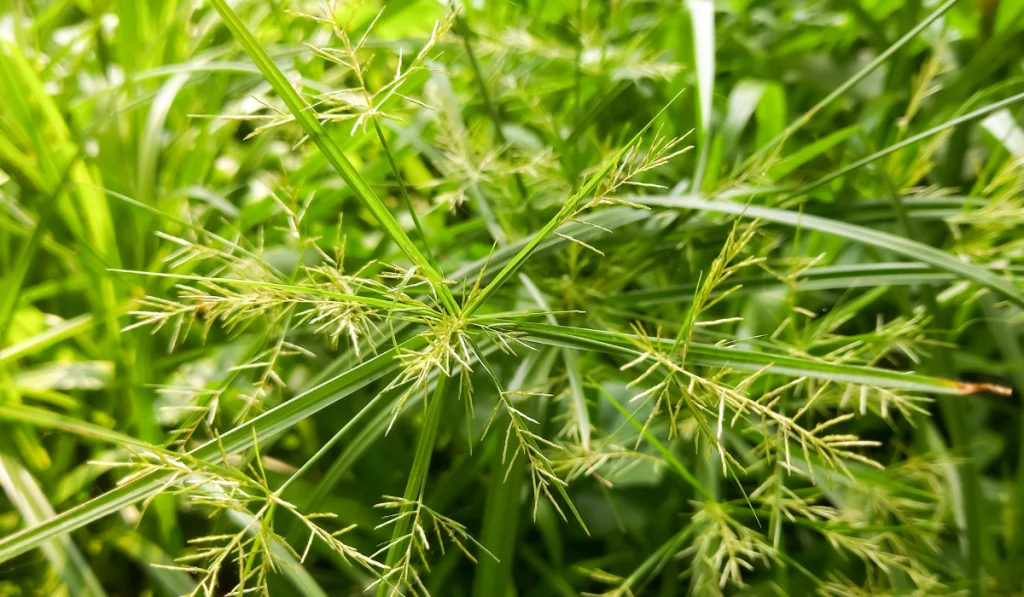
Nutsedge, or nutgrass, is a weed identified by its triangular stem, shiny leaves, and distinctive seed heads. Despite its resemblance to some types of lawn grass, nutsedge is not an actual grass and does not grow similarly.
Instead, it spreads by underground structures called rhizomes and nutlets, which make it hard to control. Nutsedge belongs to the sedge family, which includes around 5,000 species that thrive in wet or marshy areas.
How Does Nutsedge Affect Lawns?
Nutsedge can be a serious problem for homeowners, as it can quickly overtake a lawn or garden. It has a deep root system that makes it hard to pull out and can spread by seeds or underground tubers.
Nutsedge also grows faster than most grasses, so it can quickly become the dominant species in your lawn, making it look patchy and uneven.
What Differentiates Nutsedge from Other Grasses?
One of the main differences between nutsedge and other grasses is its stem shape. While most grasses have round or flattened stems, nutsedge has a triangular stem that’s easy to spot.
Nutsedge also has a unique seed head resembling a tiny spikelet or umbrella.
What Is the Life Cycle of Nutsedge?
Nutsedge is a perennial plant that can survive for more than two years. It reproduces by seeds or tubers and can grow in various soil types and conditions.
Nutsedge usually starts growing in the spring when the soil temperature reaches around 50℉, depending on nutsedge variation. It grows in summer and often produces seeds in late summer or early fall. If left untreated, nutsedge can persist and spread for years.
Methods for Killing Nutsedge
Nutsedge can be a difficult weed to get rid of, but there are several effective methods that you can use to control it. These methods fall into two main categories: natural and chemical.
Natural Methods for Killing Nutsedge
If you want a natural way to kill nutsedge, there are a few options to consider. One of the simplest methods is to pull it out by hand.
But this can be tedious, especially if you have a large area to cover. Another option is to smother the nutsedge by covering it with mulch or newspaper. This method works best in garden beds or small areas.
Chemical Methods for Killing Nutsedge
Chemical methods may be the way to go if you prefer a faster and more efficient way to kill nutsedge. Two types of herbicides can kill nutsedge: pre- and post-emergent herbicides.
Pre-Emergent Herbicides
Pre-emergent herbicides work by preventing nutsedge seeds from germinating. You apply them to the soil before the nutsedge grows, usually in the early spring. Some common pre-emergent herbicides include products that contain the active ingredients pendimethalin or prodiamine.
Post-Emergent Herbicides
Post-emergent herbicides are applied directly to the nutsedge leaves and kill the plant from the top down. Several types of post-emergent herbicides are available, including those that contain the active ingredients sulfentrazone or halosulfuron.
It’s important to note that post-emergent herbicides can potentially kill other plants, so choose carefully, follow the instructions, and avoid applying them on windy days.
Best Practices for Killing Nutsedge
Killing nutsedge can be challenging, but several best practices are available to increase your chances of success. These practices include timing and application of herbicides, repeated applications, and avoiding herbicide resistance.
Timing and Application of Herbicides
Timing is crucial when it comes to applying herbicides to kill nutsedge. It would be best if you used pre-emergent herbicides in early spring. Aim for before the soil temperature reaches 50℉ to prevent nutsedge seeds from germinating.
For best results, post-emergent herbicides should be applied to young, actively growing nutsedge plants. It’s essential to follow the instructions on the herbicide label and avoid using herbicides on windy or rainy days.
Repeated Applications
One application of herbicide may not be enough to eliminate nutsedge. Repeat applications of pre-emergent or post-emergent herbicides may be necessary to kill the weed entirely. Depending on the severity of the nutsedge infestation, you may need to apply herbicides every few weeks or months.
Avoiding Herbicide Resistance
Overuse of herbicides can lead to the development of herbicide-resistant nutsedge plants. To avoid this, it’s essential to use various control methods, including hand-pulling and smothering, in addition to herbicides.
Rotating herbicides with different active ingredients can also help prevent the development of resistance. Finally, always follow the herbicide label instructions and avoid using more than the recommended amount.
Prevention
Preventing nutsedge from becoming a problem in your lawn or garden is much easier than getting rid once it has taken hold. Here are some prevention tips to keep nutsedge from becoming an issue in the first place.
Proper Lawn Maintenance
Maintaining a healthy lawn is one of the best ways to prevent nutsedge from growing. This means mowing regularly, watering deeply and infrequently, and fertilizing according to the needs of your grass. Proper lawn care will make it more difficult for nutsedge to take hold and minimize the need for DIY herbicide application.
Preventing Seeds from Spreading
Nutsedge spreads by seeds and underground tubers, so preventing these from spreading is vital to avoiding an infestation.
One way to prevent seeds from spreading is to remove nutsedge plants as soon as you see them. Remove the entire plant, including the roots, to prevent regrowth. If the nutsedge has already produced seed heads, dispose of them in a sealed bag to prevent the seeds from spreading.
Regular Lawn Inspection
Regular lawn inspection is also essential to prevent nutsedge from taking hold. Inspect your lawn frequently, especially in areas where nutsedge is known to grow.
Look for the distinctive triangular stem and shiny nutsedge leaves, and remove any plants you find as soon as possible. Early detection and removal are crucial to preventing an infestation.
